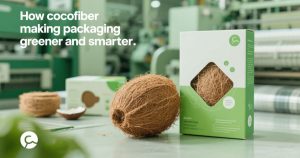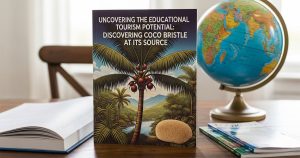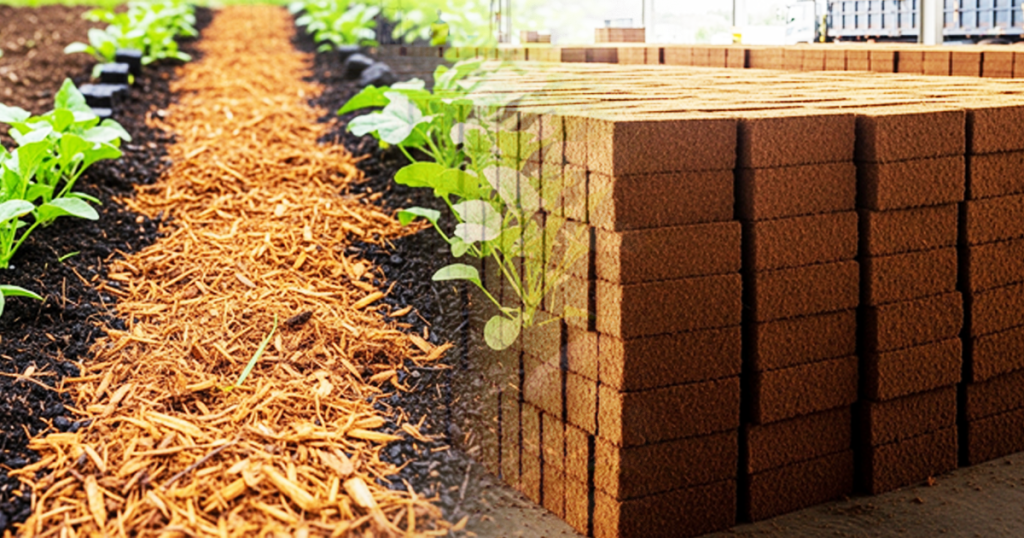By a Researcher in Sustainable Agriculture and Cocopeat Innovations
In the heart of sustainable farming, where the demand for eco-friendly practices grows stronger each season, a quiet revolution is taking place beneath the soil. It’s not driven by high-tech machinery or synthetic fertilizers, but by something far more humble: coco coir, often known as cocopeat.
Derived from the fibrous husk of the coconut, this organic substrate is reshaping how we approach horticulture, hydroponics, and soil management yet, it often goes unnoticed in mainstream agricultural discussions.
As a researcher who has spent years studying the applications and performance of cocopeat in various agricultural contexts, I find its quiet efficiency both fascinating and invaluable.
What Is Coco Coir?
People extract coco coir from the outer shell of coconuts as a natural fiber. What was once a byproduct often discarded or burned is now a goldmine for sustainable agriculture.
Workers clean, treat, and process coir into several forms coir pith (cocopeat), coir fiber, and coir chips each offering unique properties and uses in cultivation.
While traditional peat moss has long dominated the growing media market, coco coir presents a renewable and eco-conscious alternative that aligns with modern environmental priorities.
Why Farmers Are Turning to Coco Coir
Water Retention and Aeration
Coco coir is widely praised because it actively retains water while still providing excellent aeration. This balance is critical in plant growth, particularly in hydroponic systems where roots need both moisture and oxygen to thrive.
Cocopeat can retain up to 10 times its weight in water, reducing the frequency of irrigation and minimizing water wastage a crucial factor in drought-prone regions.
Reusability and Durability
Unlike peat moss, which decomposes quickly and cannot be reused, coco coir is highly durable. A single batch of cocopeat can be reused for up to four growing cycles with proper care.
This longevity not only makes it cost-effective but also reduces environmental waste.
pH Neutral and Root-Friendly
Coco coir’s naturally neutral pH (5.5 to 6.8) makes it an excellent growth medium across a wide range of crops. It supports the healthy development of root systems, minimizes nutrient lockout, and enhances nutrient uptake efficiency.
This neutrality provides a versatile foundation for farmers seeking to fine-tune their fertilization regimens.
Environmental Benefits of Coco Coir
From a sustainability standpoint, the use of coco coir presents a win-win scenario. First, it gives agricultural value to a material that would otherwise contribute to landfill or carbon emissions through incineration.
Second, coco coir production requires minimal chemical processing, making it a low-impact alternative compared to synthetic or mined growing media.
Moreover, by choosing cocopeat over peat moss which is harvested from carbon-rich peat bogs farmers help preserve biodiversity and protect carbon sinks that are vital in combating climate change.
Challenges and Considerations
No innovation is without its limitations. Different suppliers often produce coco coir with inconsistent quality, making it challenging for users to maintain reliable results. If not properly washed and buffered, cocopeat can contain high levels of sodium and potassium salts, which may inhibit plant growth. Therefore, sourcing from reliable, certified suppliers is paramount.
Another consideration is the cost of initial processing. While abundant, turning raw coir into usable cocopeat requires infrastructure and water, which can be a barrier for small-scale producers. Rising global demand is actively encouraging the development of innovative and cost-effective processing technologies.
Future Outlook: Coco Coir in a Circular Economy
Coco coir aligns perfectly with the vision of a circular bioeconomy, where waste from one industry becomes the input for another. As coconut-producing countries such as India, Indonesia, and the Philippines scale up coir processing, we may see broader adoption of this material not only in agriculture but also in packaging, construction, and even textiles.
For researchers like myself, the next frontier lies in biotechnological enhancements enriching cocopeat with beneficial microbes, slow-release nutrients, and nanomaterials to further boost plant health and productivity.







